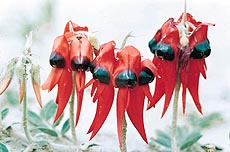Let your
garden bloom in winter
Your
garden can be a riot of colour in winter,
remarks Satish Narula
WINTER is the time when the garden
seems to have a meaning. From December onwards first it
is chrysanthemum and then a riot of colours, of winter
annuals with a wide range. The gardener gets stuck while
making suitable choice. This is a testing time for
gardeners. The gardener has to be able to achieve a
combination of various colours and fit the plant
according to its requirement of sun or shade. The effect
of plants getting lost due to merging of one species with
the other has to be avoided just as the repetition of the
previous year also has to be avoided in order to give the
garden a new look.
 Before proceeding to execute your
plan, put everything on a paper. Before proceeding to execute your
plan, put everything on a paper.
Measure the area and
make suitable beds. Those who are particular about
planning, make a map and fill colours to visualise the
kind of effect they are going to get in times to come.
Due to advances in horticulture, one can get various
species of annuals in varying heights and hues.
The magic word for
perfection in gardening is the "preparation" of
the ground. No matter how well you raised your seedling
or the quality of seeds you use, once they are planted,
the performance depends upon how you will make your bed.
Annuals are short-lived plants and they complete their
lifecycle within a few months. In that short period of
time, annuals germinate, grow, give flowers and then form
seeds again. Providing quick growth is a must and that is
possible only if the beds are nutrition rich. In fact the
period of active growth is a month and a half’ after
which they temporarily suspend growth during extreme
weather.
When the temperature
starts warming, it is time for plants to grow a little
more and then flower. Only the plants with a strong root
framework will be able to bloom well. A sick plant with a
leggy growth or a bed half-empty will never be able to
give the mass effect.
In a bed with a
dimension of 15 feet by three feet, you can add three
baskets full (big) of well rotten farm yard manure. 300
gram superphosphate and 125 gram muriate of potash. These
should be thoroughly incorporated in the upper six to
eight inches of soil. The beds are then watered. When the
soil is workable, it should be levelled like a table top.
This is the secret of getting quality blooms. In the case
of unlevelled beds, nutrients are washed over to one side
where water accumulates, resulting in loss of uniformity
in the bed. The Seedlings are then transplanted at a
specified distance, depending upon the potential height
and spread of the plant. Immediately after planting the
beds are watered again. Do not overfeed plants as you may
end up getting tremendous growth but no blooms. Nitrogen
should be added in split doses rather than in a single,
heavy dose. Also take into consideration the kind of
species you are going to have in a particular bed
Nasturtium, masembreanthemum (burf) etc grow very well
even on poorly-fed soils.
The colour planning in
the garden in fact tells about the understanding the
gardener has about the flora and effects. Follow nature.
Have you ever observed the rainbow carefully? Vibgyor,
meaning Red merges into Orange, orange into Yellow,
yellow into green and green with Blue and likewise Indigo
and violet. Stepping down the colours, red is to deep
pink to light pink and then white. Such combinations are
very pleasing. Harsh colours should be kept at the far
end of the garden. For locations with partial shade, use
nasturtium, salvia, cineraria, nemesia etcetra.
Do not grow winter
annuals in rose beds. The overlapping flowering will mar
the effect of both. However, in case of standard roses,
you can plant short-statured annuals like burf,
nasturtium, sweet allysum, dwarf pansy etc.
Why not try some unusal
annuals like clianthus this time. Perhaps, you have never
heard of it? Look at the accompanying picture, it grows
very well here. Like any other winter annual, it even
likes dry spells. Grow it in a pot as it needs support.
|

